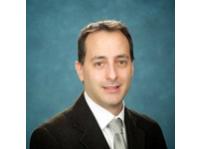| 主办单位: | 上海微技术国际合作中心(SIMTAC) 、中国科学院上海微系统与信息技术研究所 |
| 举办时间: | 2016年12月12日 - 12月13日 |
| 举办地址: | 上海集成电路技术与促进中心(浦东新区张东路1388号21栋1楼多功能厅) |
| 关注次数: | 0 |
| 报名网站: | http://www.ictc.org.cn/article/24 |

用于物联网的超低功耗射频电路设计高级课程
Ultra-low power RF circuits for IoT
2016年12月12日-13日| 上海
一、为什么参加:
这个关于IoT的RF电路的短课程采用自上向下的方式进行:从超低功率无线发射器必须满足的任务出发,进而到RX和TX链的每个构建块的细节分析。
在首次介绍无线收发器的要求之后,我们会首先分析超低功率无线电的主要特性。然后我们将继续系统地阐述用于超低功率无线通信的两个最流行的标准:ZigBee和蓝牙低功耗。
接下来,在本课程中我们会讨论超低功耗接收器和发射器的最常见和最有前途的架构,以及超低功耗无线收发器的主要构建块。跟随着RX信号路径,我们会依次讲解低噪声放大器,混频器拓扑和基带滤波器。除了最常见的方法外,该课程也涵盖了面向超低功率系统的特定解决方案,例如正交低噪声放大器、自振荡混频器、复合/多相滤波器。本课程还将继续介绍用于功率放大器(发射机侧功率最大的元件之一)的不同拓扑结构,深入分析在无线电中执行信号下降/升高变频所需的频率生成,并提出不同的振荡器拓扑和正交产生方案。
关于电路技术的讨论以功率可扩展性和偏差共享方法的分析作结束,其可以用于通过之前讨论的不同构建块之间的巧妙的可重新配置性和交叉互动来最小化无线电的功率消耗。在整个学习过程中,我们将接触到文献和参考文献中提到的许多例子。
This short course on RF circuits for IoT has a top-down by moving from the tasks that ultra-low power wireless transmitters must satisfy to a details analysis of each building blocks of RX and TX chains. After a first introduction of the requirements of a wireless transceiver, the main characteristics of ultra-low power radio will be analyzed. A system overview continues with the description of two of the most popular standards for ultra-low power wireless communications: ZigBee and Bluetooth Low Energy. The course continues by discussing the most common and promising architecture for ultra-low power receivers and transmitters. After that, the main building blocks of ultra-low power wireless transceiver are discussed. Following the RX signal path, low noise amplifiers, mixer topologies and base band filters are presented. Beside the most common approaches, particular solutions oriented to ultra-low power systems are included such as, quadrature low noise amplifiers, self-oscillating mixer, complex/polyphase filters. The course continues by presenting different topologies used for the power amplifier (one of the most power hungry element in the transmitter side) and moves insight the analysis of the frequency generation required to perform signal down/up conversion in the radio. Different oscillator topologies, and quadrature generation schemes are presented. The discussion on circuits techniques ends with the analysis of the power scalability and bias sharing approaches that can be used to minimize the power consumption of the radio through a clever re-configurability and cross-interaction between the different building blocks previously discussed. During the entire course many examples present in literature and references will be provided.
二、主办单位:
上海微技术国际合作中心(SIMTAC)
中国科学院上海微系统与信息技术研究所
三、课程安排:
课程时间:2016年12月12日—13日 (2天)
报到注册时间:2016年12月12日, 上午8:30-9:00
课程地点:上海集成电路技术与促进中心(浦东新区张东路1388号21栋1楼多功能厅)
四、课程注册费用:
课程注册费用3600元/人(含授课费、场地租赁费、资料费、课程期间午餐),学员交通、食宿等费用自理(报名回执表中将提供相关协议酒店信息供选择)。
4人以上团体报名优惠可协商;
优惠折扣:在校学生注册费用2500元/人;
请于12月9日前将全款汇至以下账户。付款请备注:(IoT+单位/学校+姓名)
五、报名方式:
请各单位收到通知后,积极选派人员参加。报名截止日期为2016年12月9日,请在此日期前将报名回执表发送Email:
邮件:training#simtac.org
报名咨询电话:Grace:18516128250
六、课程具体安排:
第一天:12月12日
系统概述
• 超低功率系统的特性• 无线RX简介
• 无线TX简介
• 收发器特性的度量
• 一些超低功耗标准的深入分析
• 收发器架构
• 设计注意事项
System Overview
• Characteristics of ultra-low power systems• Introduction to wireless RX
• Introduction to wireless TX
• Metrics for the characterization of the transceiver
• In-sight some ultra-low power standards
• Transceiver architectures
• Design considerations
第二天:12月13日
用于低功率无线的电路技术
• 低噪声放大器• 混合器
• 基带滤波器
• 功率放大器
• 频率生成
• 功率可扩展性
• 偏差共享
Circuit Techniques for low power wireless
• Low noise amplifiers• Mixers
• Base-band filters
• Power Amplifiers
• Frequency generation
• Power scalability
• Bias sharing
七、教授简介:

Antonio Liscidini
Marvell集成电路设计领域顾问加拿大多伦多大学助理教授
意大利帕维亚大学博士学位
帕维亚大学助理教授
IEEE交流电路与系统II副主编
IEEE固态电路学会的杰出讲师
欧洲固态电路会议和国际固态电路会议TPC成员
Antonio Liscidini分别于2002年和2006年在意大利帕维亚大学的电气工程获得Laurea学位(优等生)和博士学位。他于2003年曾作为美国加利福尼亚州圣克拉拉国家半导体公司的夏季实习生,研究多相滤波器和CMOS LNAs。从2008年到2012年,他是帕维亚大学的助理教授和Marvell半导体公司在集成电路设计领域的顾问。自2012年12月起,他一直担任加拿大多伦多大学电气与计算机工程系Edward S. Rogers高级教授的助理教授。他的研究兴趣是在蜂窝和超低功率应用的收发器和频率合成器的实现。
Liscidini教授曾获得过2005年IEEE VLSI电路讨论会最佳学生论文奖和2011年IEEE定制集成电路会议最佳邀请论文奖。2008年至2011年,他担任IEEE交流电路与系统II:特快简介栏目的副主编,并于2013年7月在ESSCIRC大会特别会议上担任IEEE JOURNAL OF SOLID STATE CIRCUITS的客座编辑。自2016年以来,他一直是IEEE固态电路学会的杰出讲师。目前他是欧洲固态电路会议(ESSCIRC)和国际固态电路会议(ISSCC)的TPC成员。
Antonio Liscidini received the Laurea degree (summa cum laude) and Ph.D. degree in electrical engineering from the University of Pavia, Pavia, Italy, in 2002 and 2006, respectively. He was a summer Intern with National Semiconductors, Santa Clara, CA, USA, in 2003, study- ing poly phase filters and CMOS LNAs. From 2008 to 2012, he was an Assistant Professor with the University of Pavia and a Consultant with Marvell Semiconductors in the area of integrated circuit design. Since December 2012, he has been an Assistant Professor with the Edward S. Rogers Sr. Department of Electrical and Computer Engineering, University of Toronto, Toronto, ON, Canada. His research interests are in the implementations of transceivers and frequency synthesizers for cellular and ultra-low power applications.
Prof. Liscidini was the recipient of the Best Student Paper Award at IEEE 2005 Symposium on VLSI Circuits and the Best Invited Paper Award at 2011 IEEE Custom Integrated Circuit Conference. From 2008 to 2011, he served as an associate editor of the IEEE Transactions On Circuits And Systems Ii: Express Briefs, and he served as a guest editor of the IEEE Journal Of Solid State Circuits for the special issue on ESSCIRC Conference, July 2013. Since 2016, he has been a Distinguished Lecturer of the IEEE Solid-State Circuits Society. Currently he is member of the TPC of the European Solid State Circuit Conference (ESSCIRC) and of the International Solid State Circuit Conference (ISSCC).




